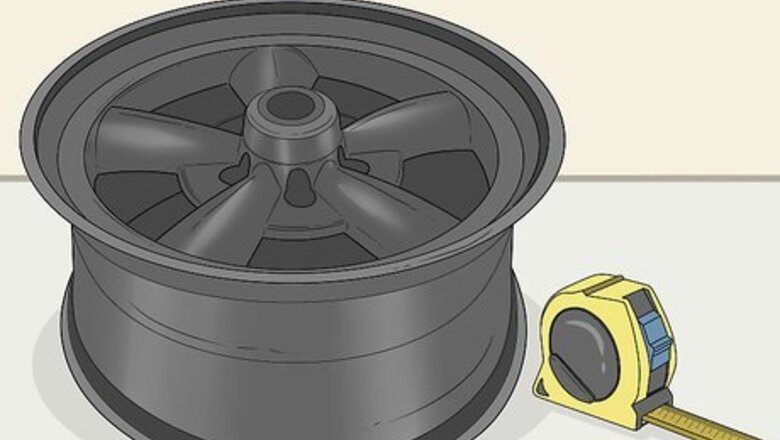
views
Diameter
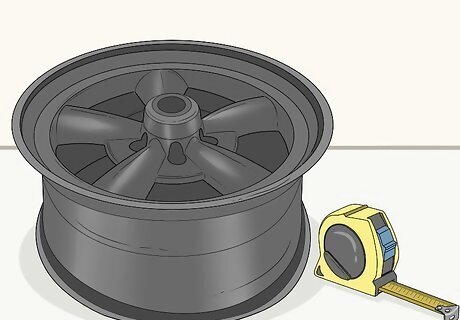
Lay your rim on a flat, stable surface and get a measuring tape. Put a clean blanket or cloth on top of a table and lay your rim on top with the spokes or center portion facing up. Get a retractable measuring tape that includes hash marks for both inches and millimeters. Use a measuring tape with a metal hook to make hanging it on the lip of a rim easier.Tip: Diameter and width are usually measured in inches, while bolt patterns and offset are often listed in millimeters. Pull the measuring tape out before using it to inspect it for bends or dents. If the measuring tape is damaged, you won’t get accurate measurements.
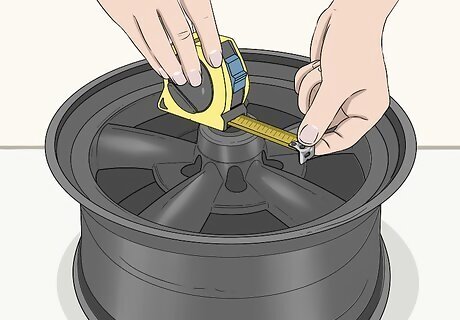
Pull the measuring tape across so that it bisects the rim. Place the hook of the measuring tape on the outside of the rim’s lip. Pull the measuring tape out across the rim to the opposite side. Adjust the placement of the hook and the case of the measuring tape until the blade crosses through the center of the rim. Look at the measuring tape at the edge of the lip to find your rim’s outer diameter. The lips are the portion of a rim that stick out around the edge of the barrel. They help hold a wheel in place while a vehicle is in motion. The outer diameter only refers to the rim’s measurement from lip to lip. The true diameter of a wheel doesn’t include the lip.
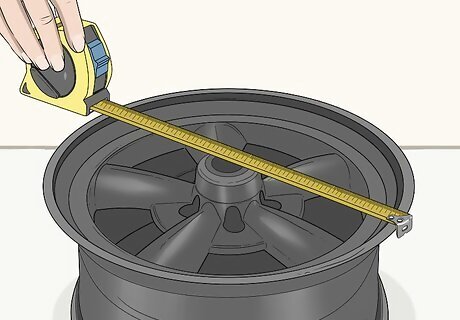
Measure the distance from the exterior edge of the lip to the barrel. Choose any location on your wheel. Press the hook of your measuring tape flat against the barrel of the rim on the inside of the lip. Pull the measuring tape out and stop where the lip ends to measure the size of the lip. The barrel refers to the flat surface in the middle of a rim’s width. This is where the wheel rests when it is installed on a rim.
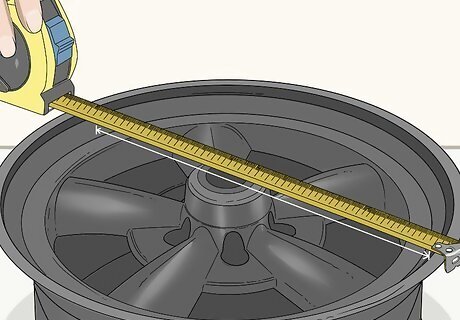
Subtract the height of the lip from the diameter twice to get the correct diameter. Subtract the length of the lip twice from your outer diameter, once for each end of the wheel. This will give you the true diameter of your rim. For example, if the outer diameter is 18 inches (46 cm) but the lip extends 1 inch (2.5 cm) out from the barrel, the actual diameter of the wheel is 16 inches (41 cm), since you subtract the lip twice—once for each side. You can measure from the inside of the lip to the opposite edge if you’d like, but this can be hard to do since the measuring tape won’t be perfectly flat across the surface of the rim.
Width
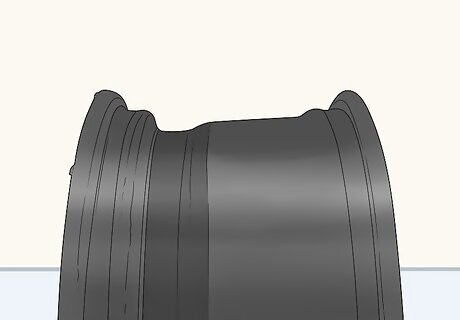
Turn the rim upright so that it’s resting on the lips. Turn the rim so that it’s resting on the table the way it would fit on a vehicle. Place 2 shims on either side at the bottom to keep the wheel from rolling away. The width of a rim determines what size the tires can be without impacting the performance of a vehicle, so you need an accurate measurement.Tip: Choose a tire that is no more than ⁄2 in (1.3 cm) bigger or smaller than your rim’s width. If a tire is too big or small, it won't fit properly on the rim and could be dangerous to drive on.
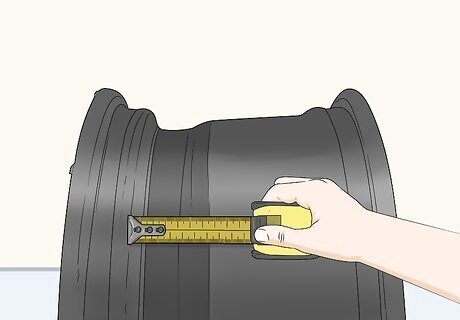
Place the hook of your measuring tape inside the lip. Stretch your measuring tape out. Stick the hook at the end against the inside of the lip so that it is flush against it. Hold the hook in place with your nondominant hand and stretch your measuring tape to the other side of the wheel.
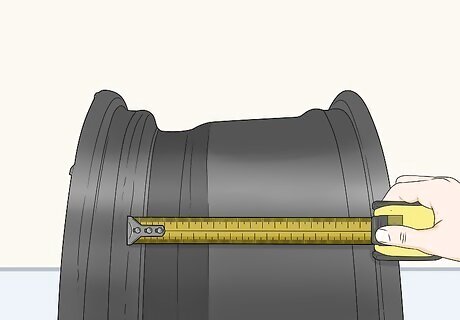
Pull the measuring tape across to the other lip. Pull your measuring tape out in a line perpendicular to your rim’s center. Your wheel’s width is measured from inside of the lip on one side to the inside of the lip on the other side. Wheel widths are typically sized in 0.5 in (13 mm) increments, so if you get a number that doesn’t end in a full or half inch, check your measurements again. It is unlikely that your rim’s width ends in a number that isn’t 0 or 5.
Bolt Pattern
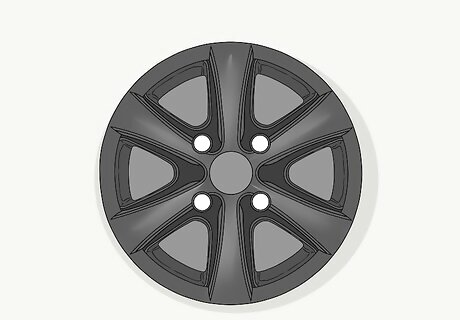
Lay the rim down with the bolts facing you. Place your rim flat on the work surface so that the bolts in the middle of the rim are facing up. The bolt pattern (or bolt circle) refers to the number of studs that hold a tire’s lug nuts. You need to know a rim’s bolt pattern if you’re going to be attaching a rim to your vehicle.Warning: Even if a tire fits on the rim and it is the right diameter and width for a vehicle, the rim cannot be attached if the bolt pattern doesn’t match the vehicle.
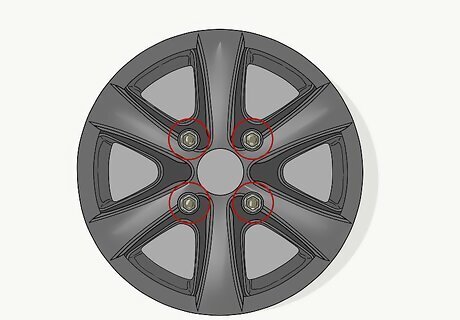
Count the bolts to determine whether it is a 4, 5, 6, or 8-lug pattern. Count the number of bolts that go around the very center of your rim. There are only 4 possible configurations: 4, 5, 6, or 8. You use the number of bolts to determine the method necessary to measure your rim’s bolt pattern.
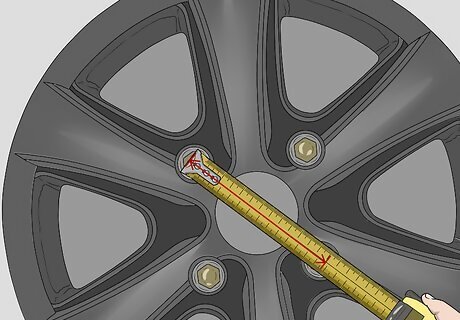
Measure from the middle of 2 opposite bolts if it’s a 4, 6, or 8-lug pattern. Rims with 4, 6, or 8 lugs all use the same method for measuring. If you have a rim with 4, 6, or 8 lugs, place the hook of your measuring tape in the middle of any bolt. Pull it across to the bolt on the exact opposite side, covering the middle opening with your measuring tape. Measure the bolt pattern from the center of the first hole to the center of the second hole. Bolt pattern measurements are typically taken in millimeters. Bolt patterns are written with 2 measurements: the number of bolts and the diameter from center to center. So a 4x100 bolt pattern means that there are 4 lugs, with a diameter of 100 millimetres (3.9 in).
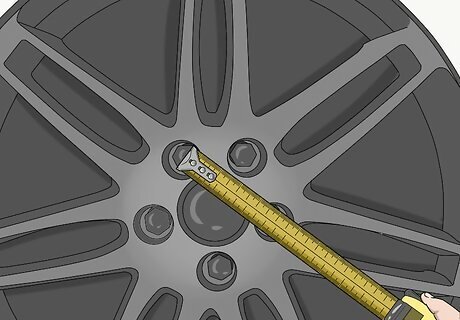
Measure from any bolt to the outside edge of a bolt on the opposite side for a 5-lug rim. A wheel with 5 lugs won’t have a symmetrical set of bolts. To measure a 5-lug rim, place the hook of your measuring tape in the middle of a bolt. Then, choose 1 of the 2 bolts on the opposite side. Pull your measuring tape to the outside edge to measure the bolt pattern. It doesn’t matter which of the bolts on the opposite side you choose to use.
Offset and Backspacing
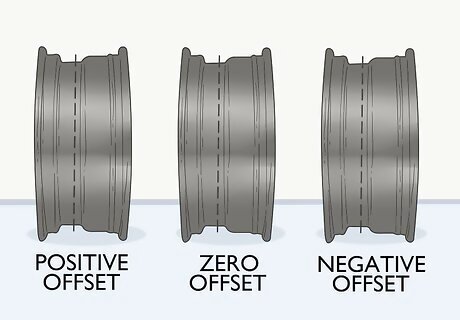
Use offset and backspacing to calculate a rim’s brake clearance. Wheel offset refers to the distance from the back of the mounting face to the center of the wheel well. Backspacing refers to how much room there is behind a mounting face. These measurements are important when determining the brake clearance on a set of rims. The mounting face refers to the backside of the center of a rim where your bolt pattern is. It faces the brake disc on a wheel. If the wheel has no (or zero) offset, then the back of the mounting face is in the center of the rim. If the mounting face is behind the center of the wheel, then it has a negative offset. This is common on older vehicles and exotic vehicles. If the mounting face is in front of the center of the wheel, then the rim has a positive offset. This is the most common configuration for rims, since it creates more space for the brakes and provides greater stability.
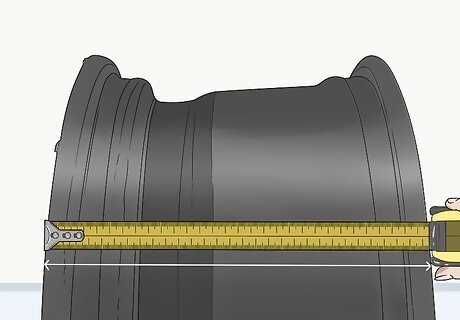
Measure the width of the wheel from outside lip to outside lip. Unlike a rim’s true width, offset refers to the center of a wheel from the outside of each lip. In other words, you need a rim’s total width to determine offset. Place the hook of your measuring tape on the outside of a lip and pull it across to the opposite side. Measuring offset and backspacing can be kind of tricky. Write down and label each measurement on a piece of paper to make this process easier.
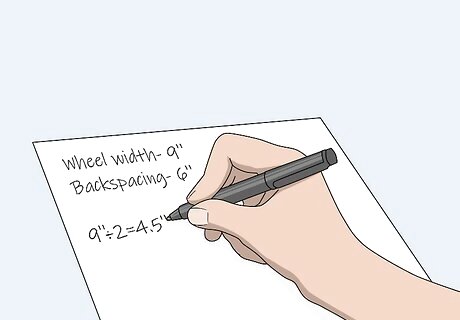
Divide the width in half to determine where the center of your rim is. There are no reference points on the inside of a rim to tell you where the center is. To find the middle of your wheel, divide the total width in half. This will tell you where the center of your rim is.
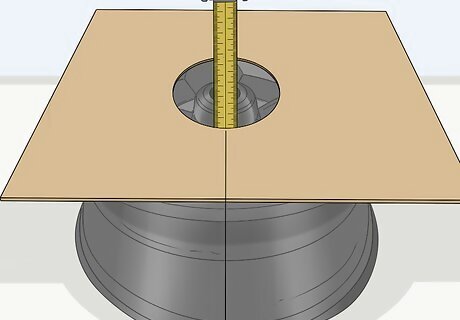
Turn the rim so that the inside faces up and measure the backspacing. If it isn’t already laying flat, turn it so that the side that faces the brakes is facing you. Place the hook of your measuring tape flat against the back of the mounting face (next to the bolts). Pull the measuring tape straight up and measure to the outer edge of the rim.Tip: If you’re having trouble figuring out exactly where your wheel ends, place a piece of cardboard with a hole in the middle on top of your wheel. This way you can use the edge of the cardboard as a reference for the edge of your rim. The measurement from the edge of the inside mounting face to the edge of the inside wheel is the backspacing.
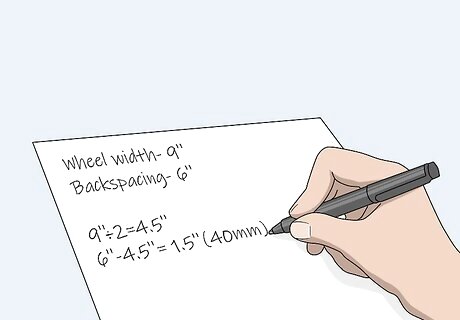
Subtract the center of the rim from the backspacing to find your offset. Take half of the rim’s width and subtract the backspacing to find your offset. If the number is negative, you have a negative offset. If the number is positive, you have a positive offset. Offset is typically measured in millimeters. For example, let’s say you have a rim with a 9 in (23 cm) width. The center of the rim must be 4.5 inches (11 cm). If the backspace is 6 inches (15 cm), then you subtract 4.5 from 6 to get 1.5 inches (38 mm). Because this number isn’t negative, the rim has a positive offset. Offset and backspacing will help you determine brake clearance on a rim. Measure a brake disc from edge to edge to determine how much space it needs in a wheel well.











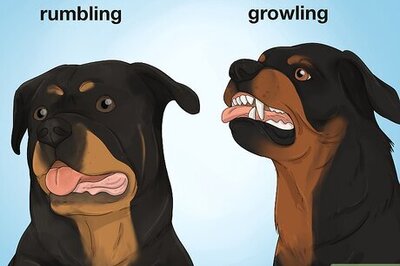




Comments
0 comment